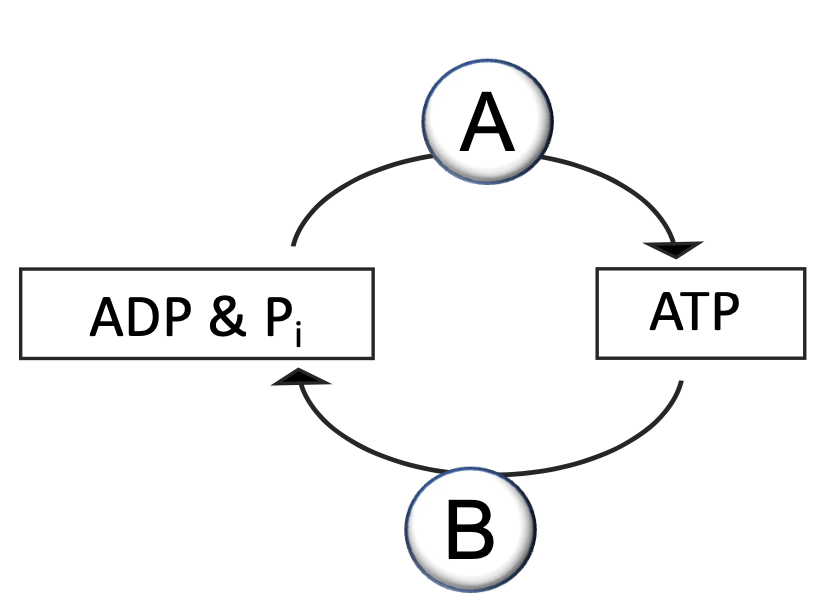1) What is energy?
Energy is the ability to do work.
7) How does chemosynthesis differ from photosynthesis?
Chemosynthesis and photosynthesis both produce sugars but . . .
-chemosynthesis uses chemical compounds to do so and occurs in bacteria
-photosynthesis uses light energy and occurs in autotrophs
5) How do autotrophs get energy?
How do heterotrophs get energy?
Autotrophs get energy from the sun(photosynthesis). Heterotrophs get energy by eating other organisms.
15) What is the equation for aerobic respiration? Use both compounds & words.

11) What process is common to both aerobic and anaerobic respiration? Where does this process occur in the cell?
Glycolysis is common to both aerobic and anaerobic respiration.
It occurs in the cytoplasm.
8) When might you experience lactic acid fermentation in your cells?
When you require more energy from your muscles than the oxygen you replace (e.g., very strenuous workout requiring quick energy).

3) Explain what is happening at “A” & “B” in the image above.
A- energy is being stored by creating a bond
B- energy is being released by breaking a bond
6) Write the equation for photosynthesis using both words and molecules.

BONUS: Which pigments can be found in deciduous leaves? What color does each create?
chlorophyll- greens and yellows
carotenoids- yellows and oranges
anthocyanins- reds and purples

Who are the sisters on a mission to demystify science with humor and relevance?
The Amoeba Sisters
10) What are the two types of fermentation processes? What does each produce?
-alcoholic fermentation produces ethyl alcohol and carbon dioxide
-lactic acid fermentation produces lactic acid
4) List the location of the light-dependent and light-
independent reactions.
Light-dependent reactions occur in the thylakoid stacks (granum)
Light-independent reactions occur in the stroma
9) How does the ATP production differ in aerobic and anaerobic respiration?
ATP production is very low in anaerobic respiration (2 ATP) and much higher in aerobic respiration (~36 ATP).
14) What are the three major steps in aerobic respiration?
Glycolysis, Krebs Cycle, Electron Transport Chain
12) How do humans use the 2 types of fermentation for food production?
-alcoholic fermentation is used to produce beer, wine and bread
-lactic acid fermentation is used to produce yogurt, sour cream, kimchi, and sauerkraut
13) How are the processes of photosynthesis and cellular respiration related?
Photosynthesis and cellular respiration are opposite processes. The inputs (reactants) of one are the outputs (products) of the other.
BONUS: Explain why plants appear green to your eye.
Plants appear green because white light from the sun contains many wavelengths of light. All the colors except green are absorbed by the plant and green wavelengths are reflected to your eye.
2) List the parts of an ATP molecule.
ATP is comprised of three parts:
adenine
ribose
3 phosphate groups